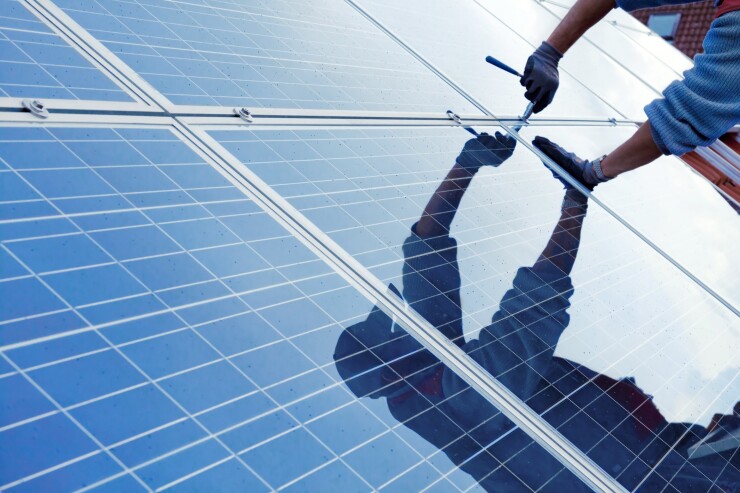NBT Bancorp’s move into solar panel lending addresses an age-old banking challenge, along with some more contemporary ones.
Loan portfolio diversification? Check. Fintech partnership? Check. Environmental brownie points? Check.
The Norwich, N.Y., company is working with Sungage Financial, a Boston outfit that enables contractors who sell and install solar panels in customers’ homes to offer financing on the spot.
While the earliest fintechs threatened to disrupt banking, NBT’s partnership with Sungage is part of a trend, a few years old now, of collaboration between nimble startups and traditional institutions.
"When we think about partnering with these younger, newer, much smaller firms, it’s really important to be always learning," said Dawn Gillette, the bank’s senior vice president for specialty lending. "We want to try new things, but we want to do it in a controlled environment so when there are growing pains we can manage them."

The tie-up is also a sign of the growing importance for community banks of finding a niche as they struggle to compete in an increasingly crowded and competitive credit marketplace.
The parent of the $9 billion-asset NBT Bank was impressed with Sungage’s technology, Gillette said. Typically, a buyer of solar panels would have to apply for a loan at a bank or fill out an application at the dealer. Like other fintech operations, Sungage delivers a much faster process. It takes just seconds to reach a decision, according to Gillette.
Consumer lending makes up a big part of NBT’s $6.3 billion loan portfolio — nearly 27% at March 31 — so adding a new line of business helps from a credit-quality standpoint.
Sungage operates in 14 states and the District of Columbia, so the partnership should bring geographic as well as product diversification. At the end of 2016, specialty lending, a nationwide activity, accounted for $375 million, or 17%, of the consumer portfolio. Most of the rest of NBT’s consumer loans are from the bank’s local market, which spans New York, Pennsylvania and New England.
“We do consider specialty lending to be a core area of focus and growth, but we are not looking for it to become a huge piece of the balance sheet,” Gillette said. “It’s a piece of the puzzle that allows us to create diversity in our consumer loan portfolio.”
NBT’s partnership with Sungage comes on the heels of a banner 2016 for the solar industry. Nationwide, the number of commercial and residential installations exceeded 370,000 creating more than 14,700 megawatts of power, according to the Solar Energy Industry Association. Energy capacity generated by solar energy should triple over the next five years, the group forecasts.
On the residential side, a little more than half of all installations are paid for upfront or financed with bank loans, according to Sungage, but that share is expected to grow to nearly 73% by 2021. Most of the remaining installations are financed by loans that result in liens being placed on consumers’ homes, known as Property Assessed Clean Energy, or

Solar’s growth is hardly going unnoticed in banking circles. In September, the $1.9 billion-asset Live Oak Bancshares in Wilmington, N.C.,
For Sungage, finding a bank partner with the wherewithal to backstop financing was crucial. The company has relationships with other banks, but its deal with NBT is a major expansion of that network. “We are thrilled to have a bank partner that shares our passion for driving the transition to a low-cost, clean energy future with innovative consumer financing solutions,” CEO Sara Ross said in a press release issued Wednesday.
Gillette admitted she was no expert on solar energy before working with Sungage. The more she learned, the more she came to like the business.
“By installing solar panels on your home you may be able to significantly reduce your traditional electric utility bill,” Gillette said. “But to achieve those savings there is a meaningful spend. On average, solar panels cost maybe $30,000. That’s not something most consumers can come up with out of pocket. Financing that purchase gives the consumer the opportunity to achieve the savings made possible by solar and do something good for the environment, as well. For us, that made the solar panel lending opportunity incredibly attractive.”





